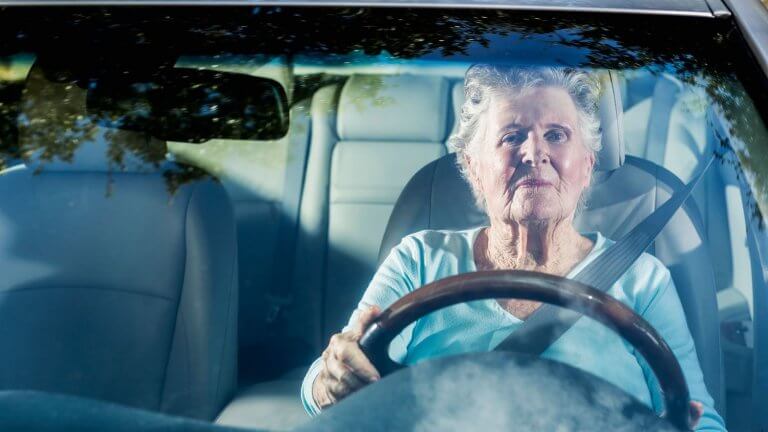How Do You Get an Elderly Person to Stop Driving?

The short answer is: you have to ask them directly to stop driving. But that’s a touchy subject and an emotional conversation. In this week’s blog post, we’ve summarized tips on how to better address this issue.
How Do You Get an Elderly Person to Stop Driving? This is one of the most common questions caregivers and family members ask. And one of the most difficult situations to deal with. The short answer is that you need to tell the person in no uncertain terms to stop driving. But it’s a touchy subject and an emotional conversation that you may not be prepared for, but can’t avoid. If you’ve realized that your parent, spouse or sibling needs to stop driving for safety reasons, you should explore some ways to have that conversation.
Understand the parent’s perspective
When preparing for a difficult conversation like this, it’s important to recognize the parent’s perspective and prepare responses to their concerns. That way, you won’t be caught off guard and forced to back down.
First, it is important to realize what driving stands for. Driving is a symbol of freedom, control and independence.
Having a vehicle that can take you where you want or need to go on demand offers you the freedom of movement, travel and independence. Conversely, not being able to drive yourself feels like a restriction – it creates a sense of forced confinement (feeling stuck or trapped), loss of control, and dependence on others.
When our older loved ones begin to lose control of their health or body, the prospect of having less control over other things in their lives is understandably frightening. This may cause them to react negatively or strongly to your request that they relinquish control. Remember, even if you feel bad or guilty, you are doing this for their safety and the safety of others. You are doing the right thing, even if it doesn’t feel that way at the moment.
Warning signs of unsafe driving
Before voicing your concerns, come up with a list of reasons why you think your loved one’s driving has become unsafe. Here are some common warning signs that your loved one’s driving has become unsafe:
Dents or scratches. If the vehicle has external and unexplained damage, it may be a sign that the driving has become dangerous. If you have the opportunity, check with the insurance company to see if the insurance premium has increased due to recent reported incidents.
Impaired or deteriorating vision. Vision is often one of the primary reasons for the need to stop driving. If your loved one is straining to read signs or showing signs of vision difficulties in other areas of life (or refusing to drive at night), this may be a sign that they need to give up driving.
Driving is now stressful or exhausting for them. Another warning sign may be the amount of stress that driving brings. This could be a symptom of them getting lost more often, reacting slower to unexpected stimuli, being involved in accidents, or causing honking, frustration, or anger from other drivers because of their driving style.
If you have a prepared list of problems you have noticed, it may be easier to convince the driver that it is a serious problem. Most likely, they have not noticed these changes in themselves.
Offer alternative transportation solutions
One of the biggest fears of seniors who lose their ability to drive is that they will be stuck, isolated, trapped or dependent. A good way to allay these fears is to offer alternative and realistic transportation options in a timely manner.
Some ideas:
- A coordinated transportation plan with friends, family or neighbors nearby.
- A paid service that can be accessed for a few hours a week (example: GoGoGrandparent – a service that allows seniors to request a ride or service from a vetted driver with or without a smartphone).
- Routes for public transportation, if available.
- Check with local churches or nonprofit organizations for free rides or services with volunteers.
- Cabs.
- Etc.
Showing that you have thought through their situation from their perspective can reduce friction.
Start the conversation with empathy.
First of all, an elderly person who is asked to stop driving may immediately conclude that you think they are a bad driver and become defensive. To avoid this, start the conversation with empathy.
Here’s how to start the conversation:
“I know this is an uncomfortable conversation [or a sensitive topic], but we need to talk about it.
Then you can give a few reasons why you think it’s time to talk about it (mention a few items from the list you compiled earlier). Make sure, however, that it’s not about him being a bad driver. Rather, it’s about love and a desire to protect the person.
Final thoughts
One of the most important things is to remain calm, respond kindly, and be understanding that the person needs time to adjust to this prospect. It may take several conversations to get them to give up their keys. If, after several conversations, the individual is still unwilling to give up driving, you can contact the DMV anonymously for suggestions or recommendations.
To make your life easier and more independent, Remedic offers many products for everyday life. Visit our website at https://remedic.co/products/
We hope you enjoyed our blog post about “How Do You Get an Elderly Person to Stop Driving?” Please contact us anytime if you have questions or comments.
Sources:
https://www.caregivercalifornia.org/2021/04/01/how-to-get-an-elderly-person-to-stop-driving/




